A common question asked in the canine kingdom is, “Are the Siberian Husky and the wolf long-lost brothers?” Well, the answer is not entirely clear. We do know that these two animals are related and that some consider dogs to be a version of domesticated wolves. That said, there are significant differences between the Siberian Husky vs wolf.
It is believed by some that the domestication of the dog took place over the last few thousand years. While there is some genetic evidence for this theory, other scientists think they evolved separately from a common ancestor. Because of thousands of years of cross-breeding dogs, we now do not know precisely how they are related. We do understand that they are linked to one another in some way.
Whatever their history, there are few similarities between the Siberian Husky and the wolf, more so than many other domestic dogs, but there are a significantly higher number of differences. We discuss the similarities and differences between the Siberian Husky and the wild wolf.
If you are not certain of your dog’s genetic makeup, you can use an at-home DNA test kit to find out.
Breed Comparison
Siberian Husky
- Height 20-23.5 Inches
- Weight 35-65 Pounds
- Location Worldwide
- Lifespan 12-14 Years
Gray Wolf
- Height 26-32 Inches
- Weight 50-110 Pounds
- Location United States, Canada, Eurasia, Africa
- Lifespan 6-8 Years (in the wild)
Key Differences
- A wolf is a wild animal. A dog is a domesticated animal.
- Wolves are larger and physically stronger.
- Huskies are more affectionate and seek out human interaction.
- Wolves do not make good pets and shy away from human contact.
- Huskies live longer than wolves. Huskies have a lifespan of 12 to 15 years, and wolves tend to live between 6 and 8 years in their antral habitat.
- Wolves have longer legs, larger heads, and much sharper teeth.
- Siberian Huskies are pets and dependent on their owners to survive.
- Wolves are smarter than Huskies and must adapt to survive.
- Huskies often have blue eyes, and wolves have yellow eyes.
History
The Siberian Husky is a high-energy but even-tempered dog with a long and ancient history. Many people often confuse them with an ordinary wolf, but there are striking differences and similarities. One of the most obvious differences is that wolves are wild animals, and Huskies are domesticated animals. Before jumping into what makes them different, first, we need to understand where they come from.
Siberian Husky

It is believed that the Siberian Husky was bred by the Chukchi Tribe in Russia thousands of years ago and is thought to have been bred from other canine animals, likely to be wolves. However, this cannot be proven beyond certainty. The Husky is famed as a sled dog. The breed was engineered to pull light loads over vast expanses of land at fast speeds without tiring too easily. After their working day, they were also used as family companionship dogs for their sweet and silly nature.
The Siberian Husky was relatively unknown outside of his tribe until 1925, when a pack of Huskies ran 658 miles across frozen land in five days to deliver a lifesaving antidote to combat a deadly outbreak of diphtheria. A Siberian Husky called Togo, who was leading the pack, was one of the dogs along with Balto, who is among the most honored and celebrated dogs of all time. Since then, the Husky has been among the most popular family dogs worldwide. Currently, Siberian Huskies are ranked by the American Kennel Club as the 21st most popular breed in America.
Because of their even temperament, Huskies are also a breed leveraged in the designer dog craze that’s taken multiple countries by storm. You can see evidence of this, with some common mixes being the German Shepherd and the Husky or even a smaller-sized mixed breed variant with the Husky-Pom.
Gray Wolf
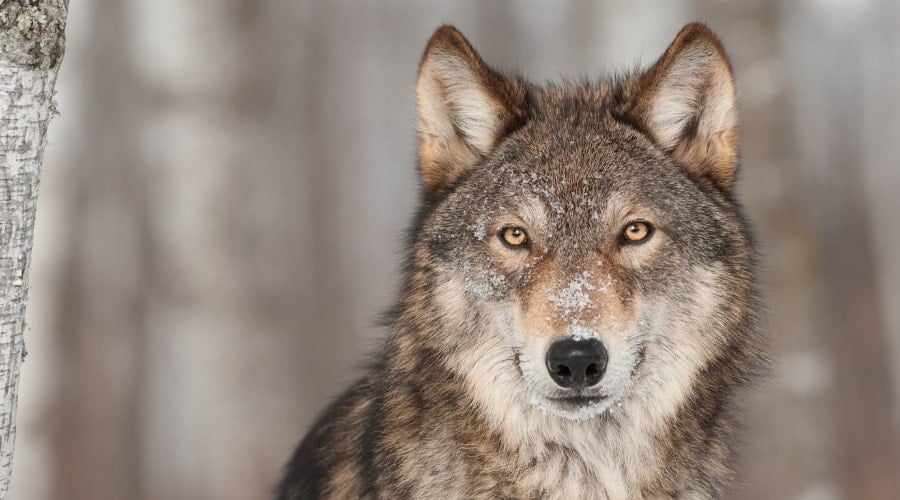
Wolves are wild animals and belong to the Canidae family, as do dogs. There are two types of wolves: the Gray and the Red. Some scientists claim there are three types, but many believe that the Ethiopian wolf is a subspecies of the Gray wolf. There are thought to be up to 38 wolf subspecies, commonly named after the area where they reside. The most common wolf is the Gray wolf, the wolf we refer to for this comparison.
It is believed that the Gray wolf originated from the Eurasian continent around a million years ago and migrated to North America approximately 750,000 years ago. They have since spread across the globe and vary in shapes and sizes to suit whichever climate they are in. Wolves are very adaptable creatures and are among the few mammals to have survived the Ice Age.
Siberian Husky vs Wolf Appearance
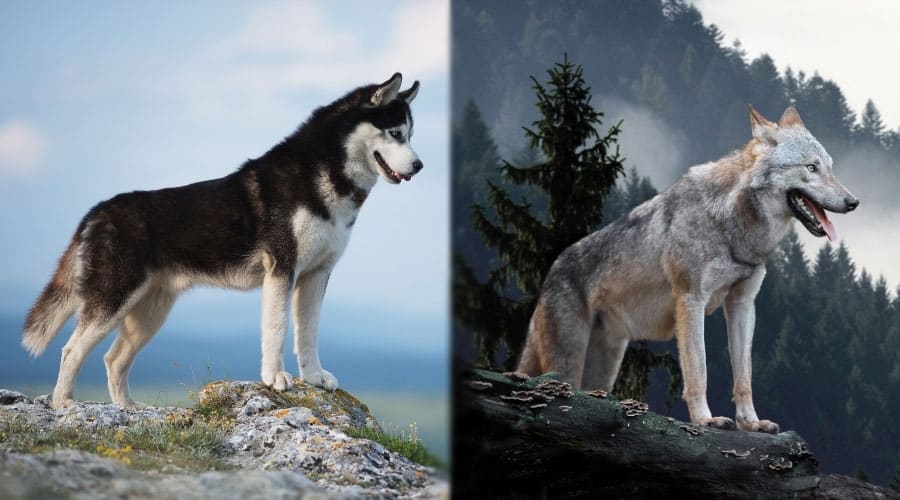
The Husky and the wolf look very similar at first glance. They have some notable physical similarities. One is that they have similar, thick double coats. Another similarity in their appearance is that they have a similarly shaped head. However, this is where their physical similarities end.
Coat & Color Husky vs Wolf
Both species have thick fur, which keeps them protected from the elements. They both also have a double coat. Under the outer layer of fur, they both have an undercoat that insulates and retains body heat. Huskies have shorter fur, while wolves grow longer, fuller coats. The Husky’s fur can take a multitude of colors, whereas the Gray wolf generally has gray and white fur.
Their eyes are notably different: the Husky has bright blue eyes, whereas the wolf has yellow eyes.
Physical Size Husky vs Wolf
The Husky is a large dog. However, the wolf is much larger and holds the title of the largest animal in the canine family. The Husky measures up to 23.5 inches tall from paw to shoulder, whereas the Gray wolf measures much taller, between 26 and 32 inches.
The wolf has much longer legs, enabling him to make bigger strides to run much longer distances than the Husky. Wolves have much larger paws, enabling them to walk across many different terrains, such as icy snow and boiling desert sand. The wolf also has longer teeth to allow him to hunt and tear prey, as well as a narrower muzzle.
The wolf has a larger head than the Husky, which is not in proportion to his body. In that head of his, his brain is of larger capacity. It is said that the wolf has far superior intelligence. These smarts help him to survive and adapt to the challenges of the wild. This extra brain capacity is directed towards survival. It is unlikely that it would help him to do extra tricks like cartwheels or backflips on human command.
It is clear to see that the Husky has evolved into a domestic canine over time, as his features would prove him unsuited to the wild. It’s unlikely that the Husky would be a hunter of equal skills as the wolf.
If it is a wolf-like canine that you are after, then you should take a look at the Czechoslovakian Wolfdog. He is a domesticated dog, albeit a relatively new breed, and looks much more like a wolf compared to the Siberian Husky. The Siberian Husky is also commonly mistaken for an Akita due to appearance similarities.
Siberian Husky vs Wolf Temperament
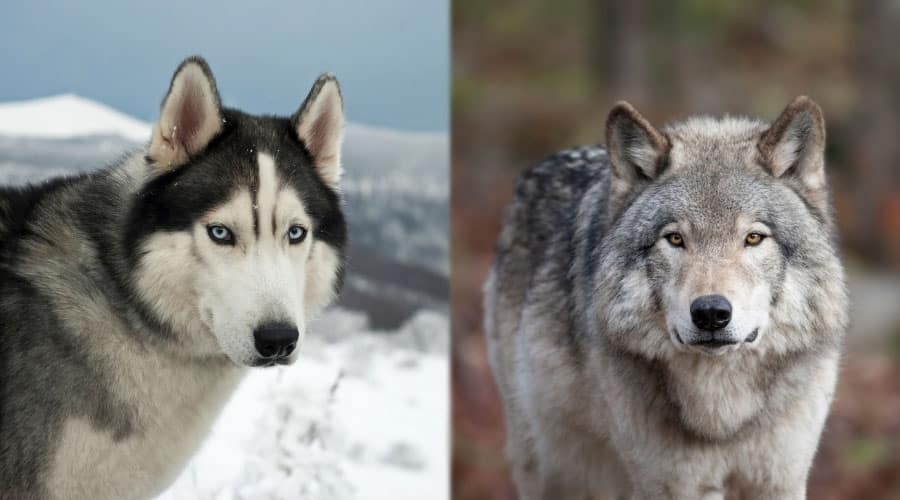
The Husky and the wolf are profoundly different in their temperament. One is a domesticated animal, and the other is wild, and as such, there aren’t many similarities, if any, between them. The process of domestication alters the mindset of the animal to be able to cohabit successfully and peacefully with humans.
Firstly, as domesticated animals, Huskies thrive in human company and often feel uncomfortable without them. On the other hand, the wolf shies away from humans, and their habitats are based where the human population is not.
Secondly, it is said that a domesticated dog will never fully reach the age of maturity, as he is always dependent on his human master, similar to being dependent on his mother if he were in the wild. The wolf matures fully at around the age of 2. When he reaches this stage, he leaves the family unit to form his own pack or join another. He is mature enough to survive on his own.
Huskies Are Playful: Wolves Survive
Huskies are silly. They play and mess around with their human or furry siblings and love to lay around on the sofa with their family. These pups thrive off exchanging affection with their humans with no purpose other than to feel loved. The wolf does not do this.
Everything the wolf does is done for a purpose: to survive. They may fight with their playmates, but this is a necessary lesson to learn how to fight or hunt; they certainly do not cuddle to feel loved by their packmates. Wolves are smarter, cunning, and adaptable. They are naturally wild and fearful of humans.
Trainability
There is a big difference in trainability between the wolf vs Husky. Huskies can be trained to do many things, including games, tricks, and helpful tasks. They are famed as sled dogs and are huge people pleasers. Huskies are also quite stubborn, but with the right approach, they are very well-behaved, skilled pups.
While a Siberian Husky may be handful, they can be trained, it takes practice and cosntiency. The wolf, on the other hand, cannot be trained. Wolves are wild animals. They are intelligent, calculating, and have no emotional attachments. Nor do they have the same level of responsiveness or social instincts dogs have.
One similarity that they possess, potentially, is that both the Siberian Husky and the wolf howl. This is believed to be a primitive trait in dogs and is often exhibited to warn other canines not to encroach on their territory. However, it is also true that other dogs howl, such as the Beagle or the Labrador, and often do this when they hear sirens or certain pitches on the piano, so this is not necessarily a similarity solely between the Husky and the wolf.
Wolf-Dog Hybrids
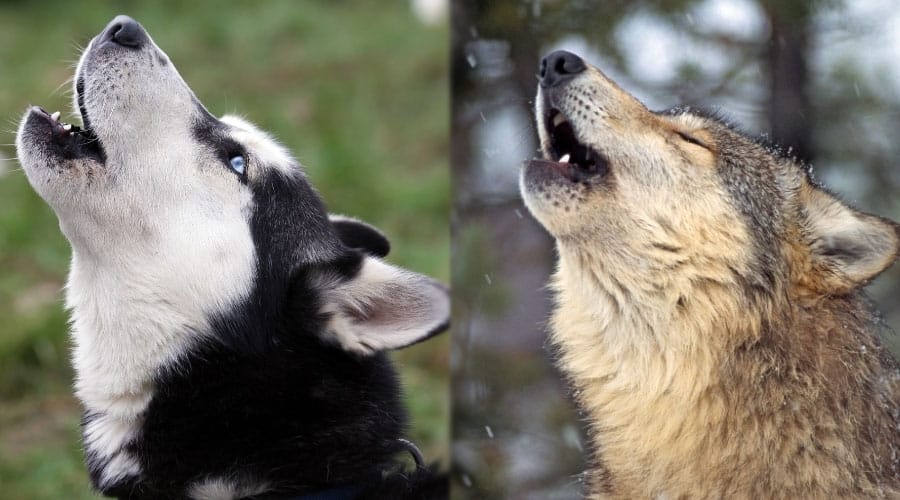
Dogs and wolves are interfertile, which means they can mate successfully, and their offspring can also have offspring. This rarely, if ever, occurs in the wild as packs are protective of their females, so they are not allowed to interbreed. However, as humans have been fascinated with mixing a domestic dog with a wolf, they have begun to experiment within the last few centuries.
These types of hybrids have been taken into family homes, but the success has been varied. If it is successful, generally, owners state that it has been very difficult, more so than any other dog they have had. Dogs and wolves mature at different rates, and as such, this makes their behavior unpredictable. Because of this, no one answer fits all with raising a hybrid.
Are Wolf-Dog Hybrids Dangerous?
Yes, they can be. It is believed that the wolf-dog hybrid poses a danger to humans as it retains the hunting instinct, but it has much lower human caution. This is certainly the case for recent generations of pure wolves. For example, it has been noted in Canada and other places like Germany that wolves are becoming bolder and are encroaching on human spaces, and this is certainly causing concern. It is not sure if this is because they are desperate for food or if they are now associating humans with food sources. Either way, this behavior is relatively new and something biologists want to monitor.
If this is still a challenge that you feel you want to take, then there may be an obstacle in your way even before you purchase the hybrid pup. In many states, the hybrid wolf-dog is considered to be an exotic pet, just as the wolf is. In these places, you will require a special license. Be sure to check your local laws if this is something that you are interested in. You do not, on the other hand, require a special license to have a Siberian Husky.
Can Wolves Be Domesticated?
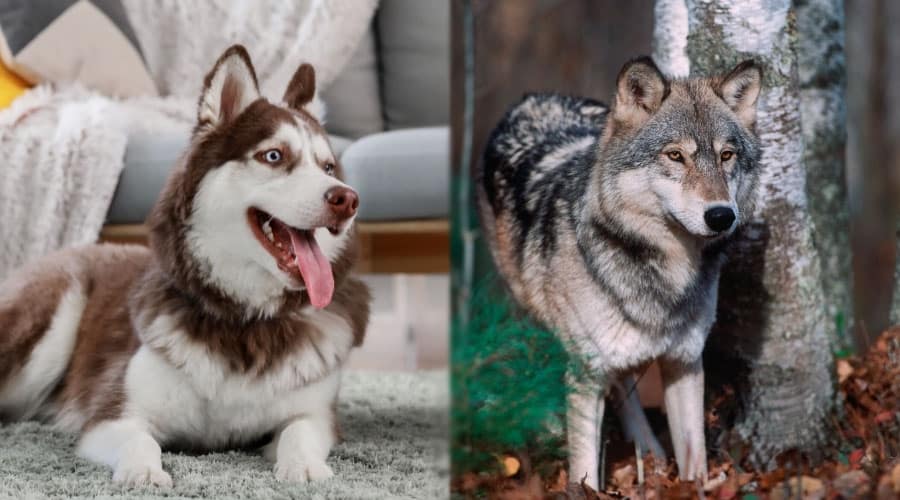
Wolf ownership has long been a contentious subject in America for a very long time, and as such, there is not a lot of information or examples to pull reliable information from. A famous example of a failed attempt at domesticating a wolf is that of the Gysinge wolf. After several years of being kept in captivity, he escaped and injured 31 people, 12 fatally.
Although recent studies have somewhat shown that wolves can form an attachment with their main caregiver, this is only the case while they are developing as puppies and adolescents. It has not been studied once they have reached sexual maturity. In the wild, this is the point at which the wolf would leave their family unit, so it is possible that this is not an attachment as such. The animal simply exhibits dependence on his main caregiver until he no longer needs him. A Husky will exhibit this attachment for his entire lifetime. What is clear, however, is that much more research needs to be conducted before we all start adopting and raising wolves in a domestic home setting.
Experts also say that the main danger in domesticating a wolf comes when people treat a wolf as they would a dog. A wolf is not a dog and should never be treated as such.
So, the answer is that wolves may be able to be domesticated, but not without risk. You should definitely not compare this process to that of a dog or, in this case, a Siberian Husky. If you have raised a Siberian Husky or a wolf hybrid, I’d love to hear your experiences in the comments.
Common Myths vs Facts
- MYTH: Huskies and Malamutes are half-wolf.
- FACT: Huskies and Malamutes are completely separate species from the wolf.
- MYTH: A wolf will make a better guard dog for my home.
- FACT: Wolves naturally shy away from humans. They will either run away, or they may act out of fear and attack them.
- MYTH: Wolves would fit in with my family and be a great companion for my other dog.
- FACT: Wolves hunt domestic dogs, and in some countries, they are their prime food source. As such, there is always a risk that your wolf, or wolf hybrid, may attack your pet dog.
Other Sled Dog Breeds
If you love the wolfy look of cold-weather dogs like the Siberian Husky, you are not alone. They are beautiful pups with wonderful personalities. You may also want to consider some other cold-weather pups, like the Samoyed, Alaskan Malamute, Alaskan Husky, or the rare Chinook. These breeds fare better in colder weather and have that fluffy look without any wild wolf characteristics.
Why Trust Love Your Dog?
Emma is a dog owner with over 20 years of experience. She has also worked as a professional dog walker and sitter for many years, taking care of countless dog breeds with different needs, including Siberian Huskies. Emma dedicates countless hours researching the latest pet care, health, food, and training developments to keep her two best buddies and other doggy clients as happy and healthy as possible. She works alongside a professional and experienced team to bring the best, most accurate, and up-to-date information to our readers.

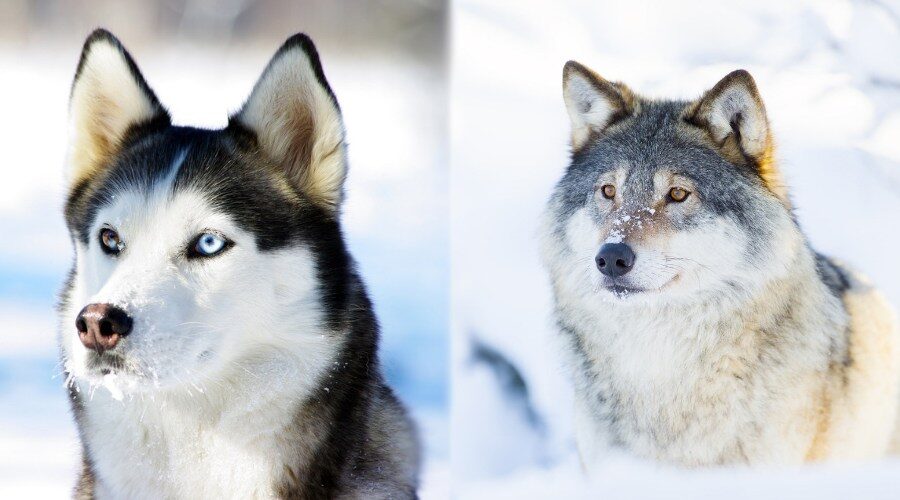
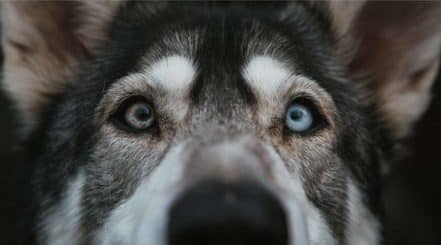
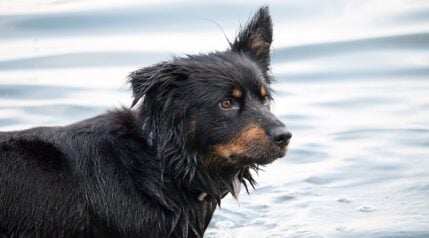
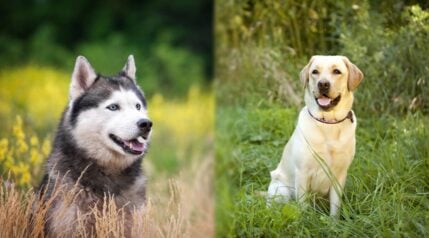
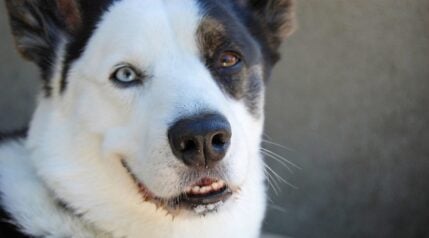
I had a pet gray wolf and it was extremely difficult to look after. He could be very aggressive and he cost me a fortune in food when we couldn’t find any cats to feed him. And the article isn’t entirely accurate – he did play and would sometimes even accept a cuddle. But if I’m honest he wasn’t a good pet and it made sense to release him. Off he went into the forest at the back of my house, I do miss him though, very sad.
ehh ill still get a wolf a had a wolf 6 years before as it died over here
My Daughter has a Husky and this Dog is so sweet. He loves kids.. HIS SIZE IS A LITTLE INTIMIDATING AND HIS FUR IS NOT LIKE A REGULAR DOG. IT HAS AMAZING FUR. He is good while in the house lays down and will even play. This dog likes to chew up everything. You can give him a toy by the end of the day ruined. Then looks for anything to chew on. Hard to keep him in because he loves the outdoors so much. A person has to spend alot of alone time to take this wild beauty. It’s worth it because such a nice and Beautiful animal. Have to be dedicated like a child that never grows up. Lol
I understand the point of this article is to show that huskies and wolves are not as similar as one might think, and to deter any notions of Wolf as pets- but it’s a little biased if you ask me. Wolves do play, they’ll play with dogs even, they’ll mate with dogs, and their character is more complex and capable of empathy than this article suggests. It is true that wolves are not meant to be pets, but come on, dogs and wolves are both Canis lupus! They’re literally the same species. This article tried to make it seem as though these two are as different as a bumblebee to a squid.
No, wolves are Canis lupus. Domesticated dogs are Canis familliaris. There are differences in their genetic makeup as well even if they do share similar genetics.
husky are cute
We have a Siberian Husky & love her. She is a great family pet & enjoys anyone who comes into our house.
Once petsat this husky for a client–the husky was dangerously territorial, and inconsistently so, making it difficult to bond with the dog in the week I was alone with it. The dog bit me and drew blood; but the pawrent attributed the incident to their dog being an “alpha”. Your article drove home my understanding that the dog’s territorialness stemmed from insecurities I couldn’t hope to quell in a week’s time. That dog needed a muzzle to protect those around it while they work to curb the dog’s behavior, but they wouldn’t listen to me *shrug* Thanks for writing!